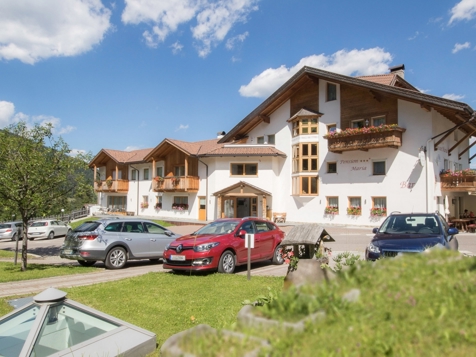



















Museum Ladin Ćiastel de Tor
In fact, besides the German and the Italian language also Ladin is spoken in the Alpine region. Ladin is an old Romanic tongue, which is nowadays spoken by around 30,000 people in the Dolomites.
The Ladin Museum at Ćiastel de Tor Castle does not only give its visitors an insight into the Ladin history, language and craft, but also into the evolution of the Dolomites, their geology as well as economic and touristic development. Changing exhibitions and special kids’ programmes complete the offer.
Culture & tradition
The museum displays the uniqueness of the landscapes in the Dolomites, the typical regional ways of life and the continuing existence of its oldest language. In fact, the habitat of the Ladins is still alive among the German and Italian language and culture area.
The Ladin language has its origins in Vulgar Latin. As well, pre-Roman and Rhaetian elements were important. The linguistic differences in the five valleys in the Dolomites – among them Gadertal and Gröden in South Tyrol – date back to the Middle Ages and the modern era. The valleys’ division over three Italian provinces during First War One is still present today. After the war, the Ladins’ recognition as an own linguistic and ethnic group has evolved in different ways.
As well, the museum tells about the importance of Ladin craft, which gained more and more importance in the late 18th century. In fact, Ampezzo was known for jewellery and souvenirs made of silver filigree, Gröden for its wood carvings, Fassa for its talented muralists as well as Gadertal for its elaborate wooden chests. The tradition of woodcarving in Gröden has withstood both World Wars until today.
History of the Dolomites
Archaeological finds from the whole region witness the settlement history of the Dolomites. The Ladin Museum in St. Martin in Thurn also offers an insight into the geology of this mountain ridge in the southern Calcareous Alps, full of fossils.
Treated as well are the touristic and economic development in the valley of the Dolomites. Already in the 19th century, today’s UNESCO World Natural Heritage fascinated alpinists and upscale tourists from the entire Europe. Effectively, tourism has become the most important economic sector in Dolomites after the year 1945.
More info & opening hours:
Museum Ladin Ćiastel de Tor
Torstraße 65, I-39030 St. Martin in Thurn
Phone: +39 0474 524020
E-mail: info@museumladin.it
Web: museumladin.it

info@bruneck.com
www.bruneck.com
Images

Museum Ladin Ćiastel de Tor in St. Martin in Thurn
TG San Vigilio-San Martin | Dolomites
Museum Ladin Ćiastel de Tor in St. Martin in Thurn
TG San Vigilio-San Martin | Dolomites - Helmuth Rier
The Ćiastel de Tor Castle accommodates the Museum Ladin, telling you more about Ladin history, the unique landscape and the formation of the Dolomites.
IDM Südtirol - Harald WisthalerPlease click on the link in the e-mail to complete your subscription.
Museums
Selected accommodations in St. Martin in Thurn

- Idyllic location in the Dolomites
- Pampering half-board
- Wellness with saunas & whirlpool
- roof terrace with loungers
- Playground, playroom & bowling alley

- Dream location in the Dolomites
- Familiar & cosy ambience
- Excellent cuisine
- Sun terrace & sauna
- Ski depot & toboggan hire

- Sunny location in the middle of the mountains
- Ideal starting point for numerous activities
- Familiar atmosphere
- Cosy rooms in Tyrolean style
- Half board with many regional delicacies

Wellness area with whirlpool and panoramic sauna in the garden, new rooms with pine wood, in-house restaurant with bar – an oasis of tranquillity for hikers, motorcyclists & relaxation lovers!


